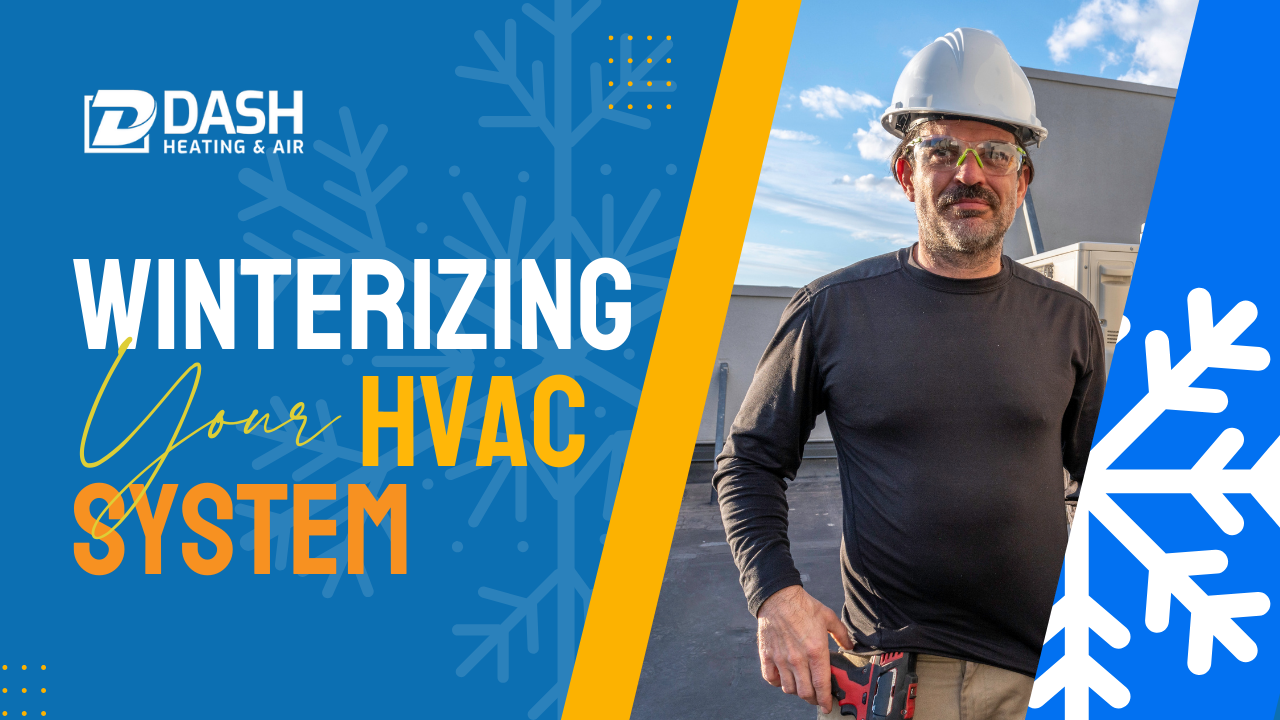
As the leaves start to change colors and the air becomes crisp, it’s a sure sign that winter is on its way. While you may be focused on preparing your home for the holiday season, one crucial aspect that often goes overlooked is winterizing your HVAC (Heating, Ventilation, and Air Conditioning) system. Proper winterization not only ensures that your HVAC system operates efficiently during the cold months but also helps you save on energy costs. In this comprehensive guide, we’ll walk you through the essential steps to winterize your HVAC system, ensuring your home stays warm and comfortable throughout the winter season.
Chapter 1: Why Winterize Your HVAC System?
1.1 Increased Efficiency:
In this section, you would explain how winterization improves the efficiency of your HVAC system. By preparing your HVAC system for the cold weather, it can operate more effectively in heating your home. This means you’ll get better performance and comfort while using less energy.
1.2 Energy Savings:
Discuss how winterizing your HVAC system can lead to significant energy savings. When your system runs efficiently, it doesn’t have to work as hard, resulting in lower energy bills. You can mention statistics or case studies to emphasize the potential cost savings.
1.3 Prolonged Lifespan:
Explain how proper maintenance and winterization can extend the lifespan of your HVAC system. This is important because HVAC systems are a significant investment, and by taking care of it, you can avoid the expense of premature replacement.
Chapter 2: Conducting a System Inspection
2.1 Air Duct Inspection:
Detail the steps involved in inspecting air ducts. This includes checking for leaks, blockages, and damages. Explain why a well-maintained duct system is essential for efficient heating.
2.2 Filter Replacement:
Describe the importance of clean filters and the impact they have on indoor air quality and system efficiency. Provide guidance on when to replace filters and how to choose the right ones.
2.3 Thermostat Check:
Explain why a functioning thermostat is crucial for precise temperature control. Include instructions on how to ensure your thermostat is working correctly.
Chapter 3: Sealing and Insulating
3.1 Weatherstripping Windows and Doors:
Discuss the significance of sealing gaps around windows and doors to prevent drafts. Offer tips and techniques for weatherstripping and recommend suitable materials.
3.2 Insulating Attics and Crawl Spaces:
Explain the importance of insulation in retaining heat. Describe different insulation materials and methods, emphasizing the benefits of insulating attics and crawl spaces.
3.3 Sealing Air Leaks:
Identify common areas in a home where air leaks can occur and explain how to seal them effectively. Emphasize how this prevents heat loss.
Chapter 4: Outdoor Unit Care
4.1 Cleaning the Unit:
Discuss why cleaning the outdoor HVAC unit is crucial before winter. Explain how debris and dirt can impact its efficiency and the steps homeowners can take to clean it.
4.2 Covering the Unit:
Detail when and how to cover the outdoor HVAC unit to protect it from winter weather. Mention the importance of using the right materials and techniques.
Chapter 5: Programmable Thermostats
5.1 Setting a Winter Schedule:
Explain the benefits of programmable thermostats, such as maintaining a comfortable temperature while conserving energy. Provide instructions on how to program thermostats for optimal winter comfort and savings.
Chapter 6: Professional Maintenance
6.1 Scheduling a Tune-Up:
Discuss the importance of scheduling professional HVAC maintenance before winter arrives. Explain what a typical maintenance visit includes.
6.2 Hiring a Technician:
Offer guidance on how to choose a qualified HVAC technician for maintenance. Highlight the importance of experience and certification.
Chapter 7: Emergency Preparedness
7.1 Identifying Common Winter HVAC Problems:
List and describe common HVAC problems that can occur during winter, such as frozen pipes or furnace malfunctions. Provide information on how to recognize these issues.
7.2 What to Do in an Emergency:
Outline steps homeowners can take in case of an HVAC emergency, emphasizing safety and when to call for professional help.
Chapter 8: Staying Warm and Energy-Efficient
8.1 Alternative Heating Methods:
Discuss supplementary heating methods, such as space heaters or fireplaces, that can reduce reliance on the HVAC system.
8.2 Maximizing Energy Efficiency:
Offer additional tips for maintaining energy efficiency during winter, such as setting the thermostat at an optimal temperature and using curtains or blinds strategically.
Conclusion
Don’t let the winter chill catch you off guard! It’s time to take action and ensure your home remains cozy and cost-effective throughout the winter season. Winterizing your HVAC system is the key to increased efficiency, energy savings, and prolonged system lifespan. By following the comprehensive guide we’ve provided, you can make sure your HVAC system operates at its best, keeping you warm without breaking the bank.
Ready to schedule your HVAC winterization services? Look no further than Dash Heating and Air, your trusted experts in HVAC maintenance. Our skilled technicians will conduct a thorough inspection, seal and insulate your home, and provide professional care for your outdoor unit. Plus, with programmable thermostat guidance and emergency preparedness tips, you’ll be well-prepared for the winter ahead. Don’t wait; contact Dash Heating and Air today to book your appointment and enjoy a comfortable, energy-efficient winter season. Stay warm, save money, and secure your peace of mind with Dash Heating and Air!
